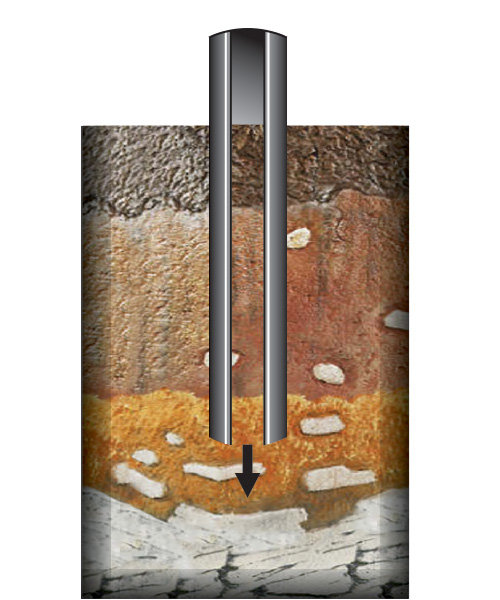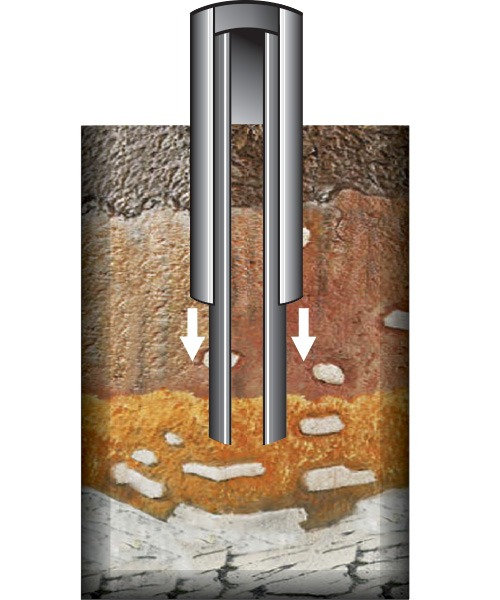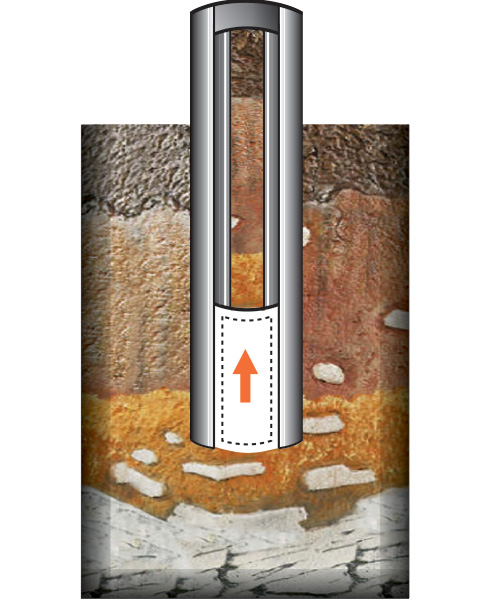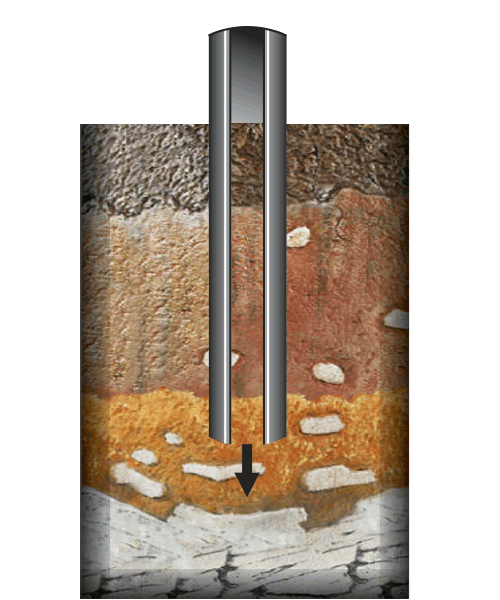OPERACIÓN NO MINERA
26 de febrero de 2017
Cómo funciona la perforación sónica
Esta historia fue publicada originalmente en GeoDrilling Internacional el 19 de marzo de 2019
Perforación sónica
Sonic es una forma avanzada de perforación que emplea el uso de alta frecuencia, energía resonante generada dentro de la cabeza Sonic para avanzar un barril de núcleo o carcasa en formaciones subsuperficiales. Durante la perforación, la energía resonante se transfiere por la sarta de perforación a la cara de la broca a varias frecuencias sónicas. La rotación simultánea de la sarta de perforación distribuye de manera uniforme la energía y el impacto en la cara de la broca.
La energía resonante se genera dentro de la cabeza Sonic mediante dos pesas que giran en sentido contrario. Un sistema de aislamiento neumático dentro del cabezal Sonic evita que la energía de resonancia se transmita al equipo de perforación y dirige preferentemente la energía hacia abajo de la sarta de perforación.
El perforador controla la energía resonante generada por el oscilador de la cabeza Sonic para que coincida con la formación que se encuentra para lograr la máxima productividad de perforación. Cuando la energía sónica resonante coincide con la frecuencia natural de la sarta de perforación, se produce la resonancia. Esto resulta en la máxima cantidad de energía que se entrega a la cara. Al mismo tiempo, la fricción del suelo inmediatamente adyacente a toda la sarta de perforación se minimiza sustancialmente, lo que da como resultado tasas de penetración rápidas.
El procedimiento de perforación sónica
Si bien hay varias maneras de perforar usando Sonic (dependiendo de las condiciones específicas del sitio y los objetivos del proyecto), el medio más común implica avanzar un barril de núcleo, que se anula con una broca de diámetro mayor que tapa el orificio abierto y previene el colapso.
Diagrama del oscilador sónico
PASO 1: AVANCE DEL BARRIL CORE
El barril central se avanza usando frecuencias sónicas. Cuando sea necesario, este paso puede realizarse sin fluidos, aire o barro.


PASO 2: DESMONTAJE DE LA CAJA
Una vez que el barril del núcleo está en su lugar, la cubierta se avanza sónicamente sobre el barril del núcleo, protegiendo la integridad del agujero en tierra suelta no consolidada.
PASO 3: RECUPERACIÓN BÁSICA
El barril de núcleo se recupera, produciendo una muestra relativamente inalterada con una recuperación del núcleo cercana al 100%.


PASO 4 - REPETIR EL AVANCE BÁSICO
Los pasos 1 a 3 se repiten a la profundidad, produciendo una muestra de núcleo continuo a través de formaciones no consolidadas con menos del 1% de desviación.
¿Necesita saber más acerca de la perforación sónica? Lea sobre el LS250 MiniSonic



